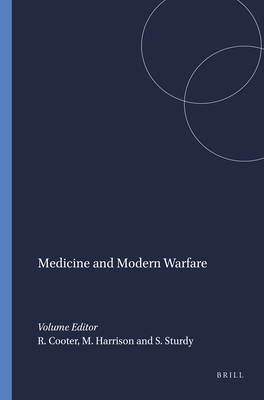
- Afhalen na 1 uur in een winkel met voorraad
- Gratis thuislevering in België vanaf € 30
- Ruim aanbod met 7 miljoen producten
- Afhalen na 1 uur in een winkel met voorraad
- Gratis thuislevering in België vanaf € 30
- Ruim aanbod met 7 miljoen producten
Zoeken
Omschrijving
After years at the margins of medical history, the relationship between war and medicine is at last beginning to move centre-stage. The essays in this volume focus on one important aspect of that relationship: the practice and development of medicine within the armed forces from the late nineteenth century through to the end of the Second World War. During this crucial period, medicine came to occupy an important position in military life, especially during the two world wars when manpower was at a premium. Good medical provisions were vital to the conservation of manpower, protecting servicemen from disease and returning the sick and wounded to duty in the shortest possible time. A detailed knowledge of the serviceman's mind and body enabled the authorities to calculate and standardise rations, training and disciplinary procedures.
Spanning the laboratory and the battlefield, and covering a range of national contexts, the essays in this volume provide valuable insights into different national styles and priorities. They also examine the relationship between medical personnel and the armed forces as a whole, by looking at such matters as the prevention of disease, the treatment of psychiatric casualties and the development of medical science. The volume as a whole demonstrates that medicine became an increasingly important part of military life in the era of modern warfare, and suggests new avenues and approaches for future study.
Spanning the laboratory and the battlefield, and covering a range of national contexts, the essays in this volume provide valuable insights into different national styles and priorities. They also examine the relationship between medical personnel and the armed forces as a whole, by looking at such matters as the prevention of disease, the treatment of psychiatric casualties and the development of medical science. The volume as a whole demonstrates that medicine became an increasingly important part of military life in the era of modern warfare, and suggests new avenues and approaches for future study.
Specificaties
Betrokkenen
- Uitgeverij:
Inhoud
- Aantal bladzijden:
- 296
- Taal:
- Engels
- Reeks:
- Reeksnummer:
- nr. 55
Eigenschappen
- Productcode (EAN):
- 9789042005464
- Verschijningsdatum:
- 1/01/1999
- Uitvoering:
- Hardcover
- Formaat:
- Genaaid
- Afmetingen:
- 155 mm x 235 mm
- Gewicht:
- 594 g

Alleen bij Standaard Boekhandel
+ 467 punten op je klantenkaart van Standaard Boekhandel
Beoordelingen
We publiceren alleen reviews die voldoen aan de voorwaarden voor reviews. Bekijk onze voorwaarden voor reviews.







